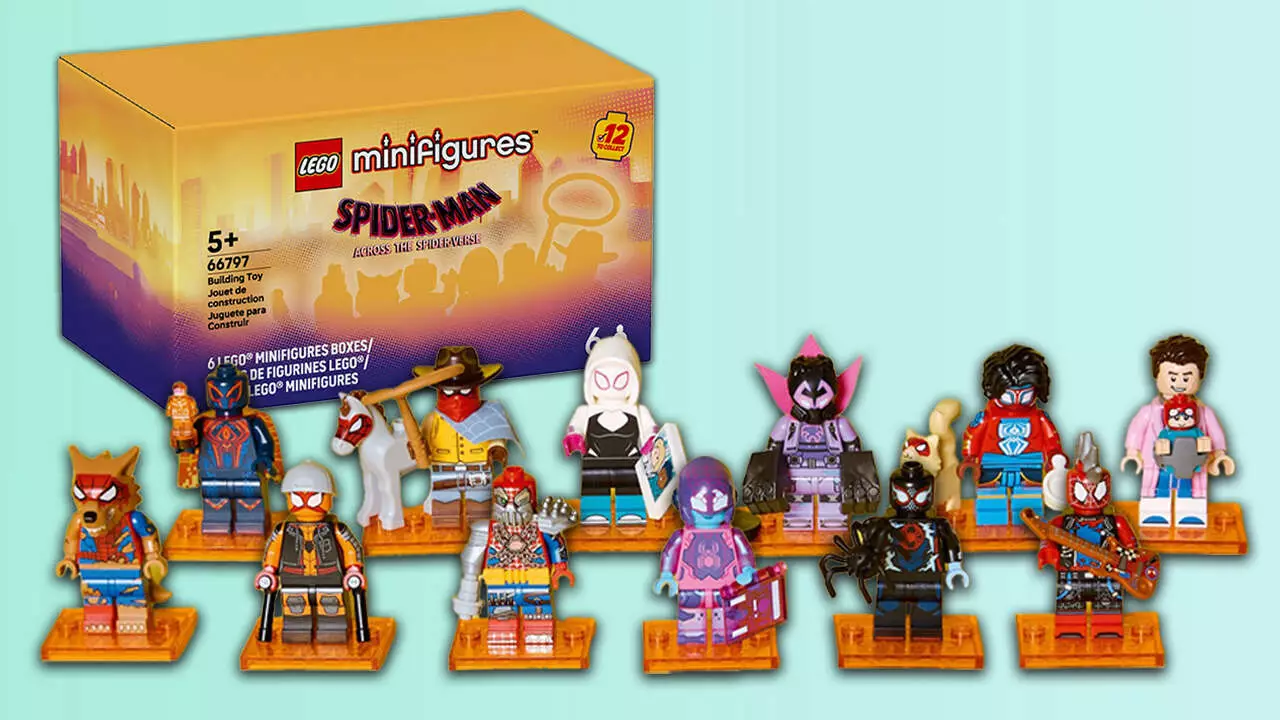When Lego announces a new minifigure series, enthusiasts and collectors alike hold their breath in anticipation, eager to add fresh characters to their collections. The upcoming release of the Spider-Man: Across the Spider-Verse-themed minifigures signals an exciting evolution in Lego’s ability to blend pop culture with tactile craftsmanship. This series doesn’t merely offer a dozen new figures; it encapsulates the spirit of a multiverse teeming with wild, imaginative possibilities. The choice to release these characters in mystery bags and larger packs highlights Lego’s clever marketing strategy—playing on the thrill of chance while enticing collectors to pursue the full set.
What distinguishes this collection, however, extends beyond mere character variety. It taps directly into the beloved, dynamic world of Spider-Man’s multiverse, bringing to life characters like Werewolf Spider-Man, Spider-Punk, and Sun-Spider—figures that challenge conventional superhero archetypes with their quirky, offbeat personalities. This diverse cast demonstrates Lego’s recognition that contemporary fandom values both nostalgia and innovation. It’s an acknowledgment that Spider-Man’s universe is no longer just about one hero, but a sprawling, interconnected web of stories, each more eccentric than the last.
Capturing the Spirit of Imagination and Play
Lego’s minifigures have always served a dual purpose—as collectibles and as catalysts for imaginative play. The inclusion of accessories such as Spider-Punk’s electric guitar and Patrick O’Hara’s horse figure transforms these tiny heroes into storytellers, inviting users to create their own adventures beyond the screen. The Peter B. Parker figure, holding not only a mini-Maya Mayday but also a baby carrier, adds a layer of narrative depth, reflecting a more familial and relatable aspect of the superhero’s life. Such details elevate these figures from mere toys to storytelling tools that foster creativity.
The variability of these minifigures also encourages collection and, inevitably, a pursuit of rarity. With a chance of duplicates, the thrill—paired with a hint of frustration—is present. Yet this variability propels collectors to purchase multiple boxes, amplifying engagement with the set. The strategic offering of 12 characters, some of which are zanier and more outlandish than traditional Spider-Man villains, underscores Lego’s understanding that the modern audience craves diversity—not just in characters but in the stories they tell with them.
Beyond the Minifigs: An Ecosystem of Collectibles
While the minifigure series is a highlight, Lego’s sprawling ecosystem of figures and builds offers additional allure. For avid Spider-Man fans, the artfully designed action figures like the Spider-Man Mech or the Iron Spider-Man Construction Figure serve as impressive display pieces that transcend traditional toys. The recent resurgence of these articulated figures, especially after the retirement of some sets, demonstrates Lego’s strategic balance between fleeting exclusives and evergreen collectibles.
Moreover, Lego’s ongoing releases into broader themes—like the Minecraft and Star Wars bundles—show a deliberate move to cater to diverse fandoms. The Walmart-exclusive sets, packed with numerous minifigures and play features at accessible prices, are not only appealing to dedicated collectors but also to newcomers looking to dip their toes into Lego’s expansive universe. These bundles foster a sense of ownership and exploration, making Lego a creative portal that extends far beyond static figurines.
Reflections on Lego’s Role in Modern Fandom Culture
Lego’s ability to craft series around popular media franchises reveals the power of tangible collectibles in an increasingly digital world. These visual and physical representations serve as bridges between fandom, craftsmanship, and nostalgia. The Spider-Verse minifigures, with their vibrant designs and accessory-packed builds, exemplify how Lego stays relevant by adapting to contemporary storytelling and visual aesthetics.
However, the rapid turnover of these collectibles also raises critical questions about the sustainability of such strategies. While limited-time releases and mystery packs generate excitement, they may foster a cycle of overconsumption among dedicated fans. Despite this, Lego’s success lies in its capacity to evoke joy and curiosity—qualities that keep its community engaged and passionate.
In the end, these new minifigures do more than just populate a display shelf—they inspire a new wave of creativity. Whether it’s crafting new adventures, reliving favorite moments, or simply collecting with a sense of wonder, Lego continues to prove its place at the intersection of art, play, and storytelling.

